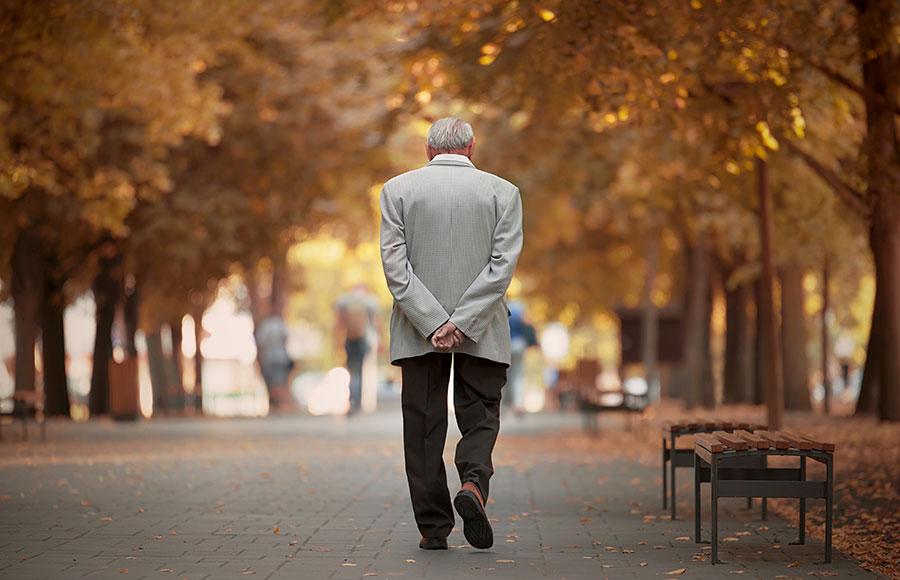As we get older, physical changes and health conditions can make falls more likely. A trip-and-fall accident is one of the leading causes of injury that send older adults to the emergency room. At Baldwin House Senior Living, we know and understand the importance of safety for our residents. We have six ways to help seniors prevent falls and these are especially important for those seniors who are still living in their own homes.
Our apartments and communities are constructed with safety in mind, as is everything we do. Here are some surprising facts about the high incidence of falls among seniors (many of whom live alone):
- Falls are the leading cause of injury among adults age 65+ and the number one cause of disability and loss of independence.
- One in five seniors suffers a serious fall each year.
- Most falls occur in the home, but many can be prevented.
Six ways to help seniors prevent falls
Here are six ways seniors can help reduce the chance of falls and injury for older adults.
Talk to your doctor about fall prevention. Begin your fall-prevention plan by making an appointment with your doctor. Be prepared to answer questions such as:
- What medications are you taking?
- Make a list of your prescription and over-the-counter medications and supplements, or bring them with you to the appointment.
- Your doctor can review your medications for side effects and interactions that may increase your risk of falling.
Have you fallen before?
- Write down the details, including when, where and how you fell.
- Be ready to talk about the times you almost fell but were caught by someone or managed to grab hold of something just in time.
- Details such as these may help your doctor identify specific fall-prevention strategies.
Could your health conditions lead to a fall?
- Certain eye and ear disorders may increase your risk of falls. Be prepared to discuss your health conditions and how comfortable you are when you walk — for example, do you feel any dizziness, joint pain, shortness of breath or numbness in your feet and legs when you walk? Your doctor may evaluate your muscle strength, balance and walking style (gait) as well.
Stay physically active
- Physical activity can go a long way toward fall prevention.
- With your doctor’s OK, consider activities such as walking, water workouts or tai chi — a gentle exercise that involves slow and graceful dance-like movements.
- Physical activities can reduce the risk of falls by improving strength, balance, coordination and flexibility.
- If you avoid physical activity because you’re afraid it will make a fall more likely, tell your doctor. They may recommend carefully monitored exercise programs or refer you to a physical therapist. The physical therapist can create a custom exercise program aimed at improving your balance, flexibility, muscle strength and gait.
Wear sensible shoes
- Consider changing your footwear as part of your fall-prevention plan.
- High heels, floppy slippers and shoes with slick soles can make you slip, stumble and fall. So can walking in your stocking feet.
- Instead, wear properly fitting, sturdy shoes with nonskid soles. Sensible shoes may also reduce joint pain.
Remove home hazards
- Take a look around your home. Your living room, kitchen, bedroom, bathroom, hallways and stairways may be filled with hazards.
- Remove boxes, newspapers, electrical cords and phone cords from walkways.
- Move coffee tables, magazine racks and plant stands from high-traffic areas.
- Secure loose rugs with double-faced tape, tacks or a slip-resistant backing — or remove loose rugs from your home.
- Repair loose, wooden floorboards and carpeting right away.
- Store clothing, dishes, food and other necessities within easy reach.
- Immediately clean spilled liquids, grease or food.
- Use non-slip mats in your bathtub or shower. Use a bath seat, which allows you to sit while showering.
Light up your living space
- Keep your home brightly lit to avoid tripping on objects that are hard to see.
- Place night lights in your bedroom, bathroom and hallways.
- Place a lamp within reach of your bed for middle-of-the-night needs.
- Make clear paths to light switches that aren’t near room entrances. Consider trading traditional switches for glow-in-the-dark or illuminated switches.
- Turn on the lights before going up or down the stairs.
- Store flashlights in easy-to-find places in case of power outages.
Use assistive devices
- Your doctor might recommend using a cane or walker to keep you steady. Other assistive devices can help, too.
- Handrails for both sides of stairways.
- Non-slip treads for bare-wood steps.
- A raised toilet seat or one with armrests.
- Grab bars for the shower or tub.
- A sturdy plastic seat for the shower or tub — plus a hand-held shower nozzle for bathing while sitting down.
If necessary, ask your doctor for a referral to an occupational therapist to get ideas for other fall-prevention strategies. Some solutions are easily installed and relatively inexpensive. Others may require professional help or a larger investment. If you’re concerned about the cost, remember that an investment in fall prevention is an investment in your independence.
Visit a Baldwin House Senior Living community near you and ask what activities we have planned for our residents as we welcome autumn together. Baldwin House Senior Living is built upon the strong foundation of guiding families and empowering seniors.
We offer families peace of mind and give seniors who call Baldwin House home the freedom to live their very best lives. Call us today to schedule a visit. We’d love to meet you or your loved one!

